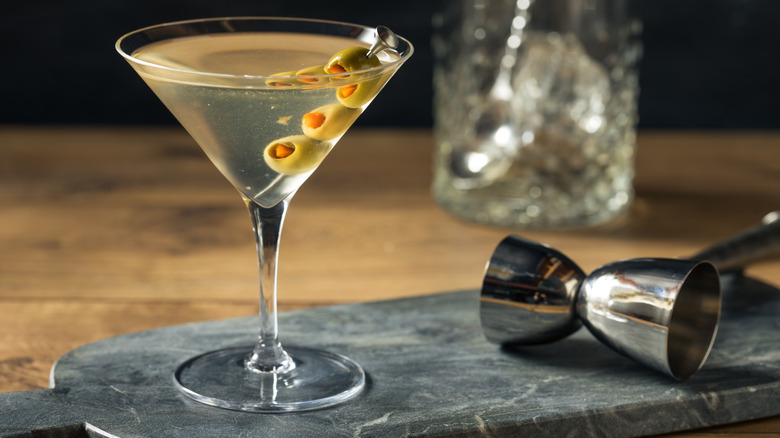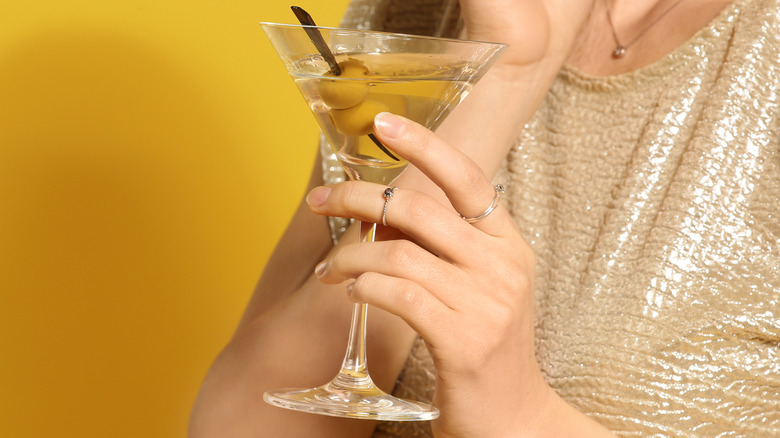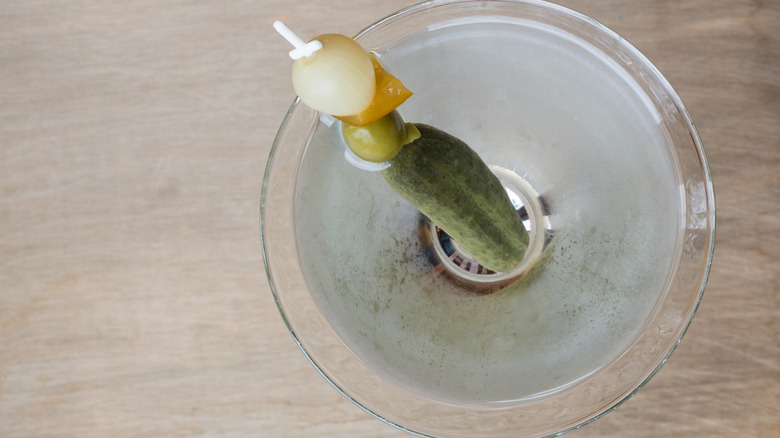What Makes A Martini Extra Dirty Or Filthy?
A dirty martini is almost more of a vibe than a drink. It's the kind of thing you order in your early 20s when you don't really know what it means, only to be thrown tastebuds-first into a savory flavor bomb. It's a drink someone orders in a movie to establish their character as someone who knows what they want and doesn't take flack from anyone. If they're particularly bold, they might order their martini extra dirty, or even filthy. But what does that actually mean?
A martini is a versatile drink whose flavor depends on a careful curation of ratios. In most cases, the only ingredients are dry vermouth and gin (or vodka). You might order a classic dry gin martini, which has a higher ratio of spirit to vermouth, or even a reverse martini, which has more vermouth than gin. But a dirty martini, or a martini with olive juice added, has always been a cult favorite. And if you add enough olive juice, your martini becomes downright filthy.
From dirty to filthy
The dirty martini is thought to have been around since the dawn of the 20th century, but it wasn't called that until the 1980s. While there's also the classic martini with a twist (of citrus), serving martinis with olives has been a longstanding tradition. Thus, it's no surprise that serving them with added olive brine became the next logical step. Legend has it that the drink was popularized by none other than President Franklin D. Roosevelt, though this isn't officially confirmed.
A classic dirty martini contains 2.5 ounces of gin or vodka, half an ounce of dry vermouth, and about a quarter to half an ounce of olive brine. Everyone has a different opinion on the precise measurement at which a dirty martini becomes an extra dirty or filthy martini, but generally, if it's more than half an ounce, you're venturing into filthy territory. The filthiest you're likely to get is probably a 2:1 ratio of gin or vodka to olive brine. The more olive brine you add, the murkier your drink will become.
Different kinds of filthy martinis
These days, a dirty martini doesn't necessarily need to contain olive brine at all. The term has evolved to encompass any number of salty, umami ingredients. For example, the Cantonese-American restaurant Bonnie's in Brooklyn offers a version of a dirty martini that uses MSG to achieve the same effect. Cafe Cluny in Manhattan has a "Filthy Martini" that includes olives but no olive brine — instead, the restaurant uses garlic-infused vodka and tomato water, resulting in something akin to a clarified bloody mary.
Pickle brine is another common substitute for olive brine in a dirty or filthy martini. Or, you could infuse your spirit of choice with kombu for an undiluted seaweed kick. There are even oystertinis out there, using spirits infused with oyster shells for a mineral, saline flavor. You could even forgo the infusions or additions altogether and make your filthy martini with an infused vodka, like Stoli's Old Bay or Absolute's Peppar. Either way, you're in for a flavorful drink that won't disappoint.



